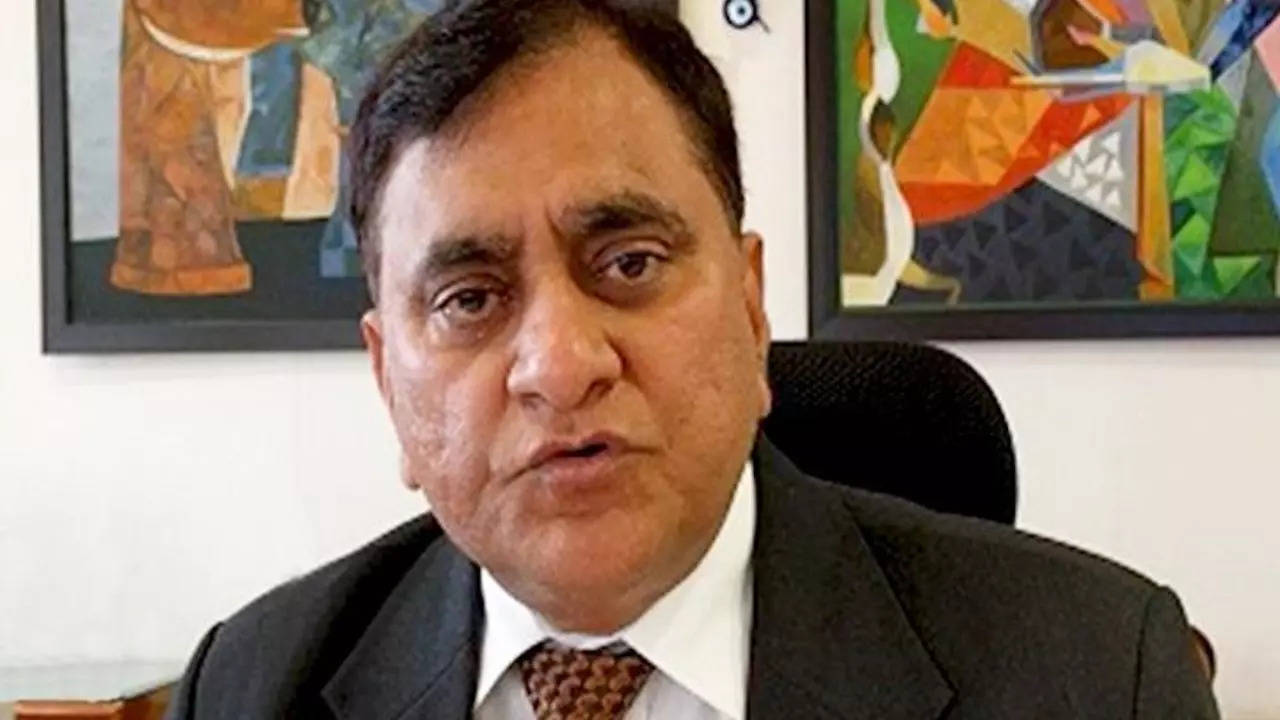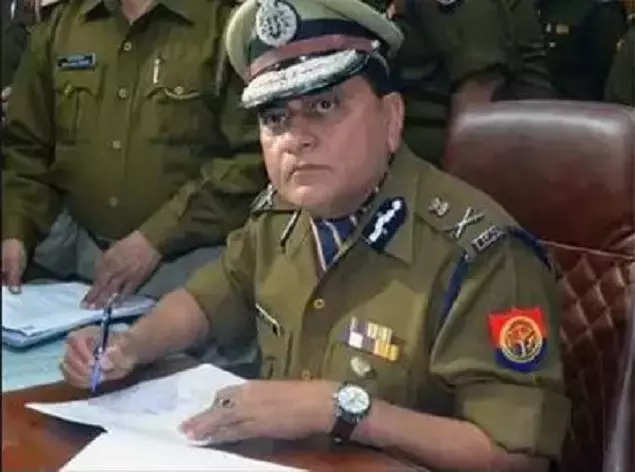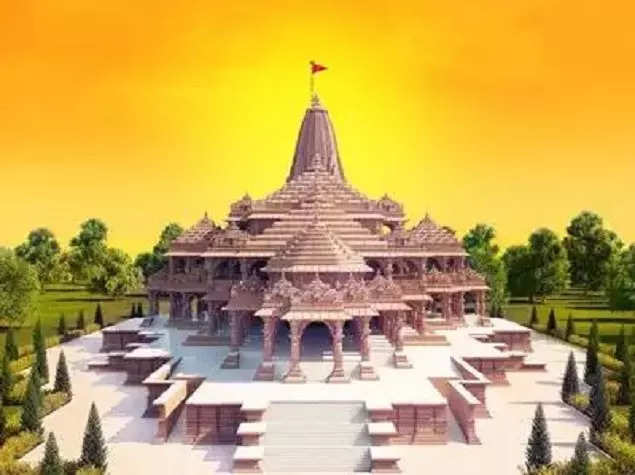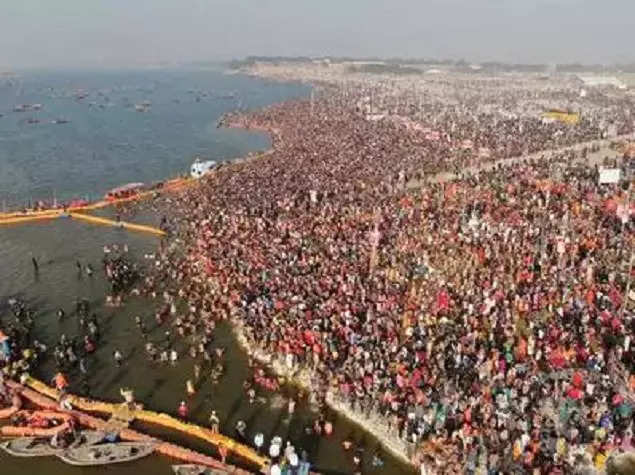
One of the most significant election planks of the BJP leaders in the ongoing Uttar Pradesh assembly election is the law and order situation in the state. Top party leaders including Prime Minister Narendra Modi, home minister Amit Shah and UP chief minister Yogi Adityanath have claimed major success of the BJP on the law and order front. While Adityanath is receiving much credit, the man behind the change in the law and order scenario is former Uttar Pradesh director general of police (DGP) OP Singh who initiated the improvement of the situation. In an interview with Kumar Shakti Shekhar, Singh reveals how while being at the helm of UP Police for two long years from January 2018 to January 2020, he not just took several steps on the law and order front but also ensured incident-free Kumbh Mela in 2019 and riot-free state after the Ayodhya verdict the same year. Excerpts:
Q. As DGP, how were you the game-changer in a tremendous improvement in the law and order situation of UP?
UP is one of the most challenging states when it comes to law and order and governance. The first thing we did was to establish rule of law which provided a sense of security to our people and a respect for the law by everyone. In the field of crimes, we started mapping the entire state and technology was extensively used for doing police work.
Galvanising the emergency response system with better penetration through police resources was one of the objectives from the beginning. We tried to provide a sense of security to all its citizens. And that is why, right from the beginning, we started mapping the entire area.
We tried to strategise the entire operations by identifying the criminals, patrolling their areas, keeping surveillance over their activities and going for a strong chase after their activities and their presence. We had a lot of operations in which a very unprecedented crackdown on criminals took place.
And that is the reason why within a year or so of my taking over we could crackdown on a number of criminals, put them behind the bars in our day-to-day operations.
Q. What did chief minister Yogi Adityanath tell you when you took over as DGP of the state in January 2018?
The CM was categorically clear that the police should work very objectively and in a very fair manner. The rule of law has to be established at all levels and there should be no interference in police work.
Q. How much support did you receive from the CM?
I had the full support of the government while carrying out my day-to-day activities in a very impartial manner. It is because of the support of the government that a lot of resources were created for the police, budgetary allocation was increased and the police commissionary system was introduced for the first time in Lucknow and Noida. This was one of the best achievements of my tenure which could only be made possible because the CM fully trusted me.

Q. You were at the helm of UP Police for two years. What do you think were the major achievements of the UP Police from the time you assumed charge?
Citizens always seek and demand a safe environment in which they can exercise their natural rights. The most appalling and stark manifestation of insecurity is the rise in crimes in cities as well as in rural areas, because these insecurities and disturbances, whether they are big or small, they have an immense bearing on the financial conditions of the state.
The situation was drastically reversed during my tenure and UP became one of the most talked-about states as I could lay my hands on the criminals and could crack them down in various operations against such elements. The whole idea was to establish a rule of law. And give a sense of security to the citizens.
That is the reason why the state of UP could become a criminal-free area where the citizens could feel very free - let's talk about women’s security or the security of various people. We could feel that these environments could be changed by various strategies. The one thing that we did was to harness technological measures.
Q. Be it Prime Minister Narendra Modi or home minister Amit Shah, BJP president JP Nadda or UP chief minister Yogi Adityanath, all have been tom-tomming about the improved law and order situation in the state. They try to convey the law and situation as their USP (unique selling proposition) in the ongoing assembly election in the state. What was your role as DGP UP Police in turning around the law and order situation in the state?
The law and order situation of the state was drastically reversed from how it prevailed in the pre-2017 times. The criminals had a field day before 2017. But after that, the strategy of the UP Police to combat crime has been decisively imparted in various manifestations. Identification of active criminals and effective surveillance on them, police engagements with such criminals, high visibility of the police in localities, intensive checking with an element of surprise as well as the concerted drive against illicit weapons - they were consistently emphasised upon.
In all our engagements with the criminals, we could arrest a number of hardened criminals, put them behind the bars and they were the ones who never wanted to come out of jail. That was a free environment and situation given to the state and that is why the law and order situation was drastically improved.
Q. While the BJP leaders praise the improved law and order situation in UP, the opposition leaders are highly critical of it, calling the UP Police’s actions against the criminals as biased. They have alleged that the state police followed a “thoko” policy.
The allegations by the opposition leaders smack of political biases.
Q. There have been many cases of encounters in UP. In several cases, the so-called history-sheeters surrendered in the police stations and the courts. Not just that, many criminals who were behind the bars refused to come out of the jails apprehending encounters. How did these encounters take place?
To combat crime, the strategy of the UP Police was to engage with the criminals. Our primary objective was to arrest those criminals. As I said before, we had mapped out the entire criminal activities of the criminals and vulnerable parts of the state and we had prepared a list of such criminals who were still at large despite being wanted by the police. In all our engagements with the criminals, the strategy was to arrest them.
But sometimes, these criminals also fired upon the police party when they were engaged with the law enforcement agency. In self-defense, the police had to open fire and some of the hardened criminals were also killed in those encounters.
But all these encounters have been scrutinised at multiple levels. Investigations were done at district level in such cases, magisterial inquiries were completed and all information according to the guidelines of the honourable Supreme Court of India was given to the National Human Rights Commission, media, etc.
These engagements were in order to impart a sense of security to the people and to create a conducive environment in which the people could live freely and there was a fear of law amongst the criminals and a sense of security amongst the law-abiding citizens.
Q. UP Police was considered to be a trigger-friendly state where the criminals had a field day. How did you manage to convert it to a law-abiding state?
Our whole idea was to provide a sense of security to the people and in doing so, we were very sure that unless you take a lot of positive steps to meet the challenges, you cannot do that. Therefore, a lot of technological solutions were needed. A lot of initiatives were taken which could make the police accountable, transparent and responsive. That is why on the one hand we could galvanise the entire police force towards the eradication of crime or towards reduction in crime.
On the other hand, we were successfully making the force a humane force. So, the sensitivity of the police force was increased. There was a lot of training on the behavioural part of the police. At the same time, a lot of punitive actions were taken against those policemen who did any illegal activities. So, a lot of policemen were dismissed from service. And a lot of policemen were rewarded for their good work.
Besides, there was a thrust on checking the criminal activities of the criminals. I can say that the entire gamut of activities, a holistic package was there in which technology and social media strategy could play a role. At the same time the behavioural change of the policemen also played a pivotal role. The whole combination of it was instrumental in improving the law and order situation of the state.

Q. It was apprehended that large-scale riots would take place in UP after the Ayodhya verdict on November 9, 2019. You were the DGP of UP then. How did you and the UP Police ensure that not a single incident of law and order problem took place?
It is true that the Ayodhya judgment by the honorable Supreme Court of India was a great challenge for UP Police because everybody anticipated and there was a strong apprehension that after the verdict of the Supreme Court, there would be some disturbances in certain parts of the state.
That is why the UP Police started preparing itself to do everything in order to maintain law and order situation in the state. Physical space, mind space and cyberspace - they were all to be managed through force deployment, community outreach and social media watch.
Therefore, we strongly devised our strategies for the successful enforcement of rule of law in cyberspace. We started holding lot of meetings and the whole idea was how to get the objectionable posts, if at all they were there, removed, additionally register FIRs and make arrests in serious cases.
In order to prepare for social media response, lot of instructions were passed to various field officers and a lot of measures were taken - for example Twitter notifications and hashtags and Youtube video clips were there. You needed to search the profiles and pages reported on Facebook. There was a concept of viral check to look out for viral posts, get their facts verified and checked and get their rebuttals issued. You also had dedicated Whatsapp numbers. All these precautions were taken.
The most important thing was that apart from the physical patrolling, we did the cyber patrolling. That was something which perhaps went a long way to achieve our objective. Total monitoring was done in cyberspace and we could find out and we could see that no objectionable material which could stoke the communal flare was there. That is how we tried to do the business and we did it.

Q. Prime Minister Narendra Modi has claimed on several occasions that the January 2019 Kumbh Mela at Prayagraj in UP was crime-free. How did you ensure that no law and order situation arose during the Kumbh Mela?
The success of Kumbh Mela 2019 was a result of a long-term strategy planning, its global vision and its great implementation. Right from day 1, we started with the selection of the right kind of team of officers with experience and energy, a comprehensive planning of training to all those people who were deployed there. We deployed almost 20,000 people with a special thrust on soft skills.
There was a multi-layer plan for security involving all kind of things - be it ATS (anti-terrorist squad), STF (special task force) or other wings of the police. All of them worked in sync with other branches to check criminals and anti-national elements.
The most important thing was that it received a global attention precisely because of the fact that, as you rightly said, it went without any incident. For the first time it happened that there was absolutely no incident whatsoever and there was a seamless experience of the pilgrims and the devotees.
Optimum integration of state-of-the-art technology and human resources ensured that all the bottlenecks were removed smoothly to ensure a surakshit (safe) Kumbh.
Q. What difference do you see between the situation of law and order when you took over as DGP of UP and now?
When I took over as the DGP of the state, the situation before 2017 was really bad. Though I was in Delhi in the government of India’s assignment (as DG of CISF), but I found that there were a lot of criminal activities and the crime situation of the state was really bad. Extortions, robbery, murders, insecurity among women - all these things were hallmarks of the state.
The entire emphasis was on improving the law and order situation and establishing rule of law in the entire state. That momentum perhaps after two years of my tenure continued. For the last five years, we can see that there is a continuous process of maintaining law and order by the present regime.







